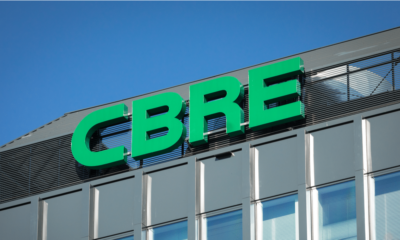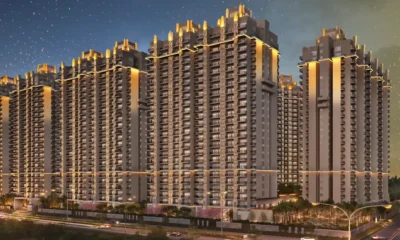Guest Column
Gurugram’s Economic Activity Reshaping NCR’s Property Landscape

By Ashwani Kumar, Pyramid Infratech

Gurugram has emerged as a powerhouse of economic dynamism, reshaping not just its own identity but also the trajectory of NCR’s real estate markets.
From a peripheral town, Gurugram is now a magnet for multinational corporations, thriving start-ups and high-value industries, each fuelling a cycle of growth that extends far beyond business.
This surge in economic activity has given rise to “opportunity zones”: micro-markets where infrastructure upgrades, commercial expansion and lifestyle aspirations converge. These pockets are redefining where the next wave of NCR’s property growth will take shape.
Gurugram’s growth is now concentrated in clearly defined opportunity zones each with its own distinct investment story. According to a JLL report, Gurugram accounted for 91 per cent of all luxury residential sales in the region in the first half of 2025. The report defines luxury housing as apartments priced above INR 5 crore, and states that Dwarka Expressway and Southern Peripheral Road (SPR) were the city’s two key micro-markets, jointly contributing 61 per cent of Gurugram’s total luxury housing sales.
SPR alone accounted for 39 per cent while Dwarka Expressway made up 22 per cent of the sales. The remaining luxury units were sold in micro-markets such as Golf Course Road, Golf Course Extension Road and other areas. Together, these micro-markets represent the next frontier of Gurugram’s real estate growth—diverse in character yet united by robust infrastructure, rising demand and promising ROI potential.
At the heart of Gurugram’s rise is its multi-sector economic depth, which provides the city with sustained momentum. Its IT and outsourcing corridors continue to draw global tech majors and agile co-working operators, anchoring the city as a preferred hub for innovation-led enterprises. The financial services sector, comprising BFSI giants, scaling fintechs and the presence of GCCs, adds another layer of stability and high-value employment.
Complementing this is a strong manufacturing base—spanning automotive, logistics, and allied industries—that reinforces Gurugram’s role as both a service and production powerhouse. Together, these sectors form the backbone of Gurugram’s property market, sustaining demand across both commercial and residential segments.
Taking a further glance at NCR’s commercial sector, as per Vestian, GCCs have taken up 42 per cent of all leased office space this year. Delhi-NCR is leading this surge, staying ahead of other big cities with its strong roads, easy travel and large talent pool. GCCs alone made up over 28 per cent of NCR’s total office leasing.
In fact, Fortune 500 firms snapped up half of the GCC space here, up from 40 per centa year ago. Gurugram, Noida and Faridabad are seeing a flood of new offices. Big global companies are looking for Grade A buildings that offer good design, better facilities and room to grow.
Besides, in the retail segment, leasing activity touched 5.7 million sq ft across the top seven cities, a 69 per cent jump over the same period last year with Delhi-NCR leading the charge in Q2, as per JLL’s report. Much of this growth stemmed from rising demand in the F&B sector, which accounted for 22 per cent of local leasing.
Therefore, as NCR’s growth story unfolds, Gurugram stands as both a residential magnet and a commercial powerhouse, with its opportunity zones proving to be far more than passing market trends. These are long-term growth ecosystems, sustained by a rare combination of economic depth, infrastructure strength and evolving lifestyle demand. As NCR’s growth story unfolds, Gurugram’s role at its core is set to remain unshakable.

 News4 weeks ago
News4 weeks agoHARERA Gurugram Orders Developer to Pay Assured Returns, Bars Arbitrary Fit-out Charges

 News4 weeks ago
News4 weeks agoOffice Leasing at Historic High in First 9 Months of 2025, says CBRE

 News4 weeks ago
News4 weeks agoIndustrial & Logistics Sector Marks 21.7% YoY Growth in Q3 2025: Savills India

 News4 weeks ago
News4 weeks agoThe High Roads: Premium Corridors in NCR Fuel India’s Housing Market Surge

 Guest Column4 weeks ago
Guest Column4 weeks agoNew Gurugram’s Sector 83 is Next Frontier for Luxury Homes, Smart Investments

 News4 weeks ago
News4 weeks agoAshtech Group Plans to Invest ₹1,800 Crore in Greater Noida West Luxury Housing Project

 News4 weeks ago
News4 weeks agoBIBA Unveils First Wedding Edit Store at Omaxe Chowk

 News4 weeks ago
News4 weeks agoLML Industrial Park Receives PADMA Scheme Approval, Offers ₹2 Crore Incentives for MSMEs





























